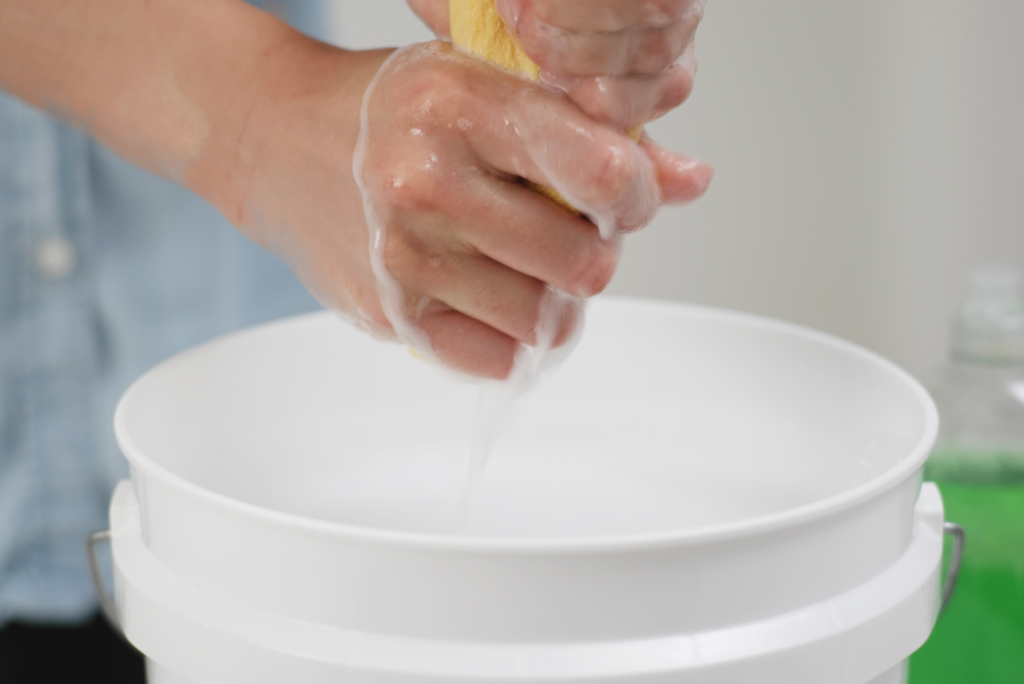It’s best not to, as residual glue can interfere with paint adhesion and cause streaks. Always clean thoroughly before priming.
How to Paint After Removing Wallpaper
Painting after removing wallpaper requires proper prep to ensure a smooth, lasting finish. Leftover glue and wall imperfections can cause paint issues if not handled correctly. This guide covers the key steps—from cleaning and repairing the walls to priming—so you’re ready to apply fresh paint with professional results. With the right prep and products, your walls will be ready for a flawless new look.
Removing Wallpaper and Cleaning the Wall

Remove Wallpaper Completely
To start, make sure all wallpaper is removed from the wall surface. If you’re dealing with stubborn wallpaper or glue residue on plaster walls, refer to our guide on How to Remove Wallpaper from Plaster Walls.
Clean Off Wallpaper Glue
After stripping wallpaper, you’ll likely see glue residue. Avoid painting over wallpaper glue, as it can cause adhesion issues and lead to an uneven finish. Use warm water and a mild detergent, wiping with a soft sponge to remove the glue. For tougher spots, try a wallpaper glue remover.
Wait for Walls to Dry
Allow the walls to dry thoroughly before moving on to the next steps. How long to wait after washing walls before painting depends on the humidity, but generally, 24 hours should suffice to ensure no moisture remains.
Prepping the Walls for Painting
Repair Wall Imperfections
Wallpaper removal can sometimes cause minor wall damage. Patch any holes or gouges with joint compound, and sand smooth once it’s dry. For more extensive repairs, learn how to repair walls to fix issues effectively.
Sanding the Walls
Sand down any rough areas or remaining glue residue to create a smooth surface. You can use fine-grit sandpaper to gently sand off any leftover wallpaper glue.
Apply a Skim Coat
If the wall surface is uneven or has minor imperfections after wallpaper removal, consider applying a thin skim coat of joint compound. This coat will help smooth out the wall and make it ready for primer and paint.
Priming the Wall
Using a quality primer is essential to ensure even paint coverage and good adhesion. Choose a primer specifically designed for previously wallpapered walls, like the Sherwin-Williams Multi-Purpose Latex Primer, which can handle minor surface variations.
Best Primer Over Wallpaper Glue: Opt for a high-adhesion primer if you’re concerned about residual wallpaper glue. This type of primer helps create a smooth, paint-ready surface and minimizes potential peeling or bubbling.
Painting the Wall
Once your walls are prepped, you’re ready to paint. Follow these steps to ensure the best results:
- Choose the Right Paint: Consider a high-quality interior paint, such as Sherwin-Williams Emerald® Interior Acrylic Latex, which offers excellent coverage and durability.
- Apply the Paint: Apply two coats of paint for an even finish, allowing ample drying time between coats.
- Use the Right Supplies: Be sure to gather the necessary supplies for painting, including high-quality brushes and rollers, painter's tape, and drop cloths to protect your space.
Frequently Asked Questions
Use warm water with mild detergent to remove glue residue, then rinse with clean water and dry thoroughly.
Yes, sanding helps remove any leftover glue and smooths out the surface for a flawless finish.
Following these steps will help you create a clean, smooth, and ready-to-paint surface after removing wallpaper, ensuring your new wall paint looks its best.
Get Personalized Recommendations from Sherwin-Williams Color Expert™
Get Personalized Recommendations from Sherwin-Williams Color Expert™
Our next-gen app lets you explore color collections, visualize colors in your space, order samples and more.
Our next-gen app lets you explore color collections, visualize colors in your space, order samples and more.




